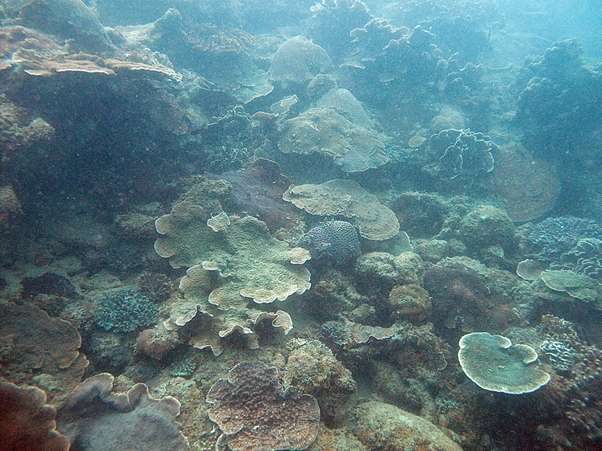Singapore corals likely to survive projected rise in sea levels
NUS marine biologists have found that corals living in Singapore’s sediment-stressed reefs are affected by light availability, but are likely to survive when the sea level rises.
As the climate changes, global sea levels are expected to rise by at least half a metre by the year 2100 due to thermal expansion of the ocean and melting polar ice. For marine habitats in sedimented, turbid waters such as the coral reefs of Singapore, rising sea levels can imperil species which have narrow environmental tolerance. In particular, corals need light for their symbiotic algae to make food for the growth and survival of the reef-building hosts. The projected increase in water depth means that corals living at the deepest parts of the reef could starve due to insufficient light.
A research team comprising Prof HUANG Danwei from the Department of Biological Sciences, NUS and his student Gwendolyn CHOW found that coral reefs in Singapore waters typically do not extend deeper than eight metres because light levels beyond this depth are not sufficient to support coral growth. The waters surrounding Singapore contain sediments and this causes light availability in deeper waters to drop considerably. The researchers also found that corals present in deeper areas (lower reef slopes) are able to tolerate a wider range of conditions and are unlikely to be threatened by a rise in sea level, provided that other stress factors such as sedimentation do not increase.
The researchers performed underwater surveys of coral reefs in Singapore from the shore to 10 metres deep over 14 months, recording the abundance and depth range of each coral as well as measuring environmental parameters such as light and sediment levels. Nearly 3,000 corals from 124 species were observed. Their analyses showed that shallow (≤5 metres) and deep (>5 metres) corals are two distinct groups of species, with their dependence on the amount of light being the main factor driving this depth-associated pattern.
Coral species adopt one of two colonisation strategies. Shallow corals live primarily in shallow reef areas and have restricted depth ranges, while deep generalist corals live at most depths and are found at the deepest reef areas. Deep corals can also live in shallow reef areas and tolerate a wide range of conditions, so sea-level rise is unlikely to threaten these species. The deep corals tend to have adaptations that allow them to capture more light, such as plating colonies that spread horizontally to maximise surface area for light capture. Some of them could have more efficient symbiotic algae that harness light energy more efficiently to make food for the host corals.
The research findings, which highlight the resilience of coral reefs in Singapore, will be useful in supporting reef management efforts. Prof Huang said, “The dominance of deep generalist corals suggest that Singapore’s reefs are relatively buffered against sea-level rise, and may be able to persist if local stressors such as sedimentation are curtailed. However, global warming continues to threaten coral reefs worldwide. Hence, we need to find solutions to mitigate thermal stress on corals.”
Moving forward, the team is continuing to study the adaptation and resilience of Singapore’s coral reefs to environmental change.

Photo shows a wide variety of corals at the reef slope of Raffles Lighthouse, Singapore. Corals continue to persist in the sediment-stressed reefs. [Image credit: Huang Danwei]
Reference
Chow GSE; YKS Chan; SS Jain; D Huang*, “Light limitation selects for depth generalists in urbanised reef coral communities”, MARINE ENVIRONMENTAL RESEARCH DOI: 10.1016/j.marenvres.2019.04.010. Published: 2019.
